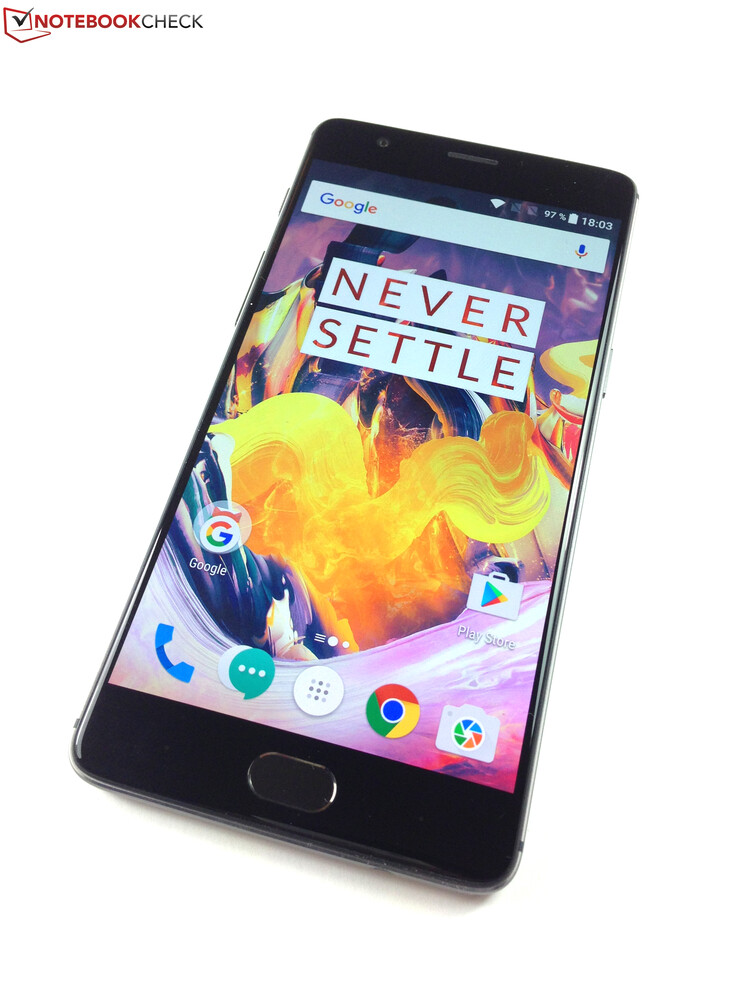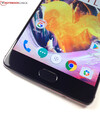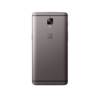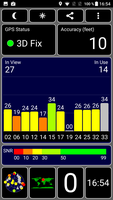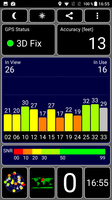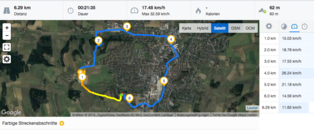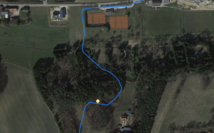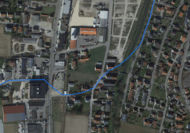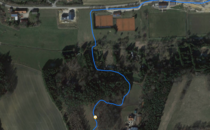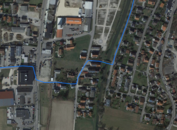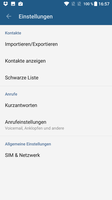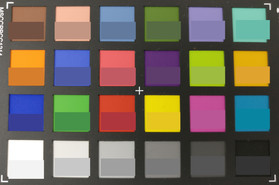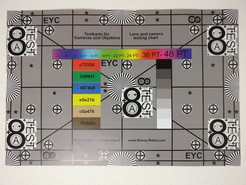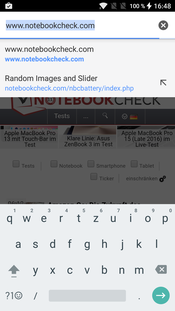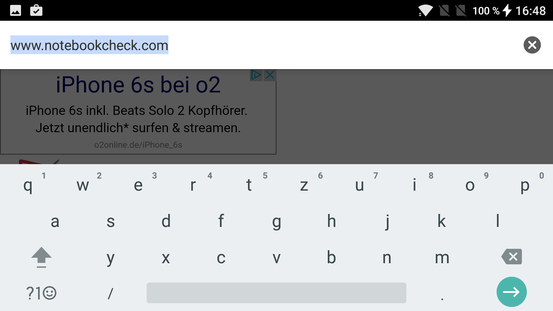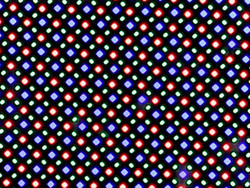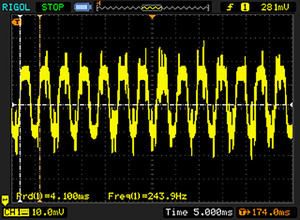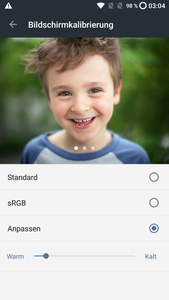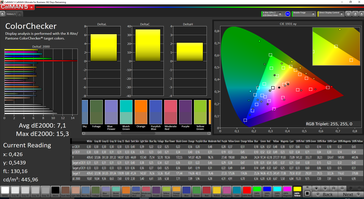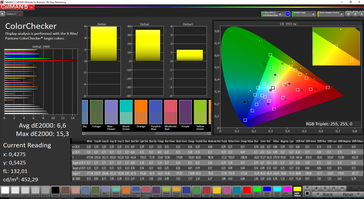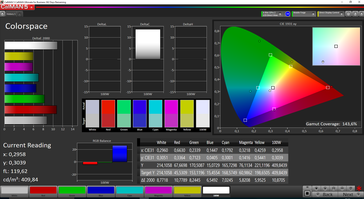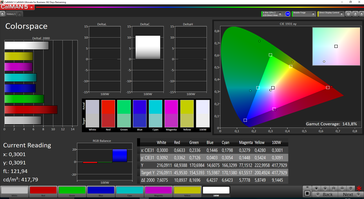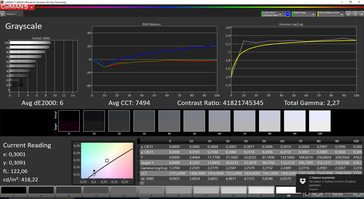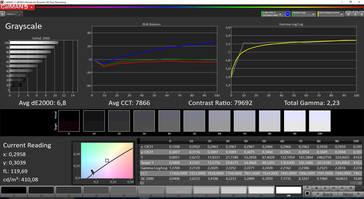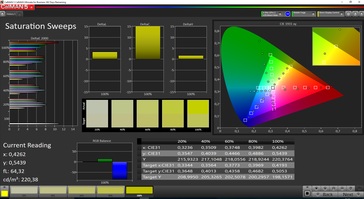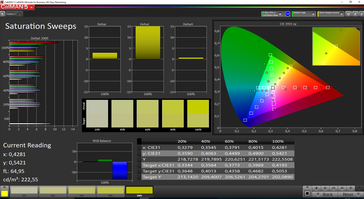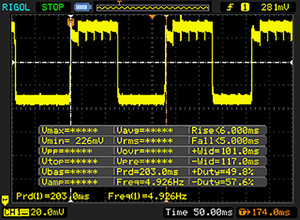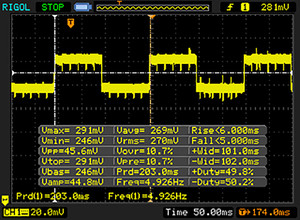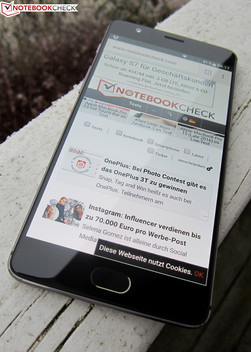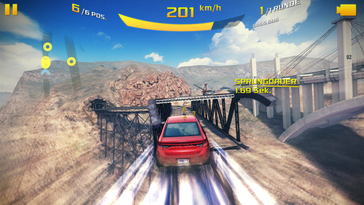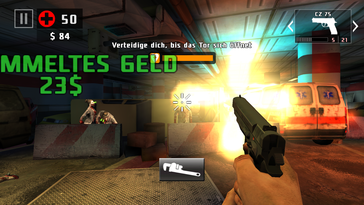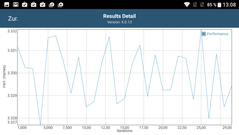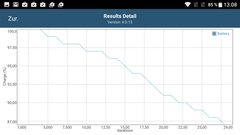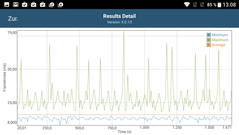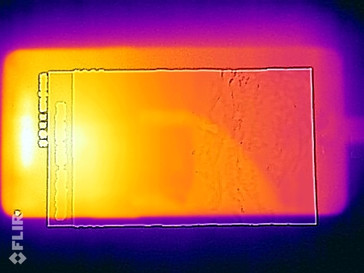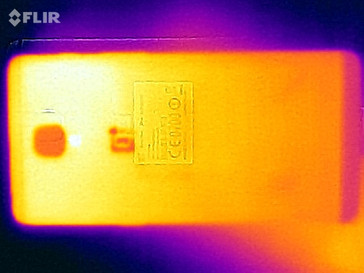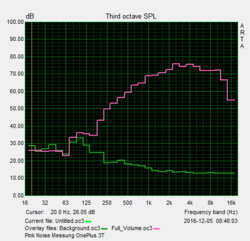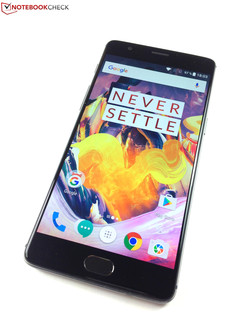OnePlus 3T Smartphone Review
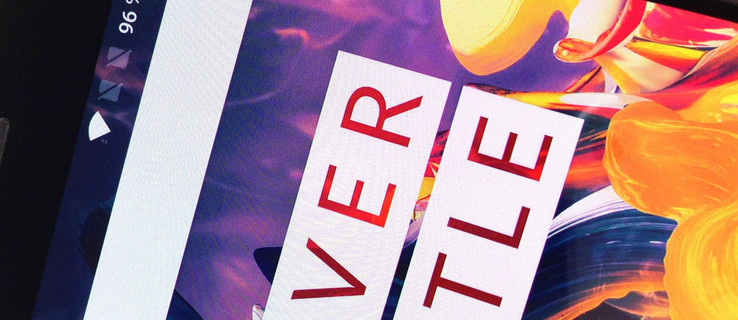
For the original German review, see here.
Not even six months after the launch of the OnePlus 3, OnePlus has discontinued its high-end smartphone OnePlus 3 – it is not produced anymore. Its successor is the OnePlus 3T, which has been available since December 2016. The design is pretty much identical to that of the 5.5-inch predecessor and most of the hardware is similar as well: AMOLED panel with Full HD resolution, 6 GB LPDDR4-RAM, Adreno 530 GPU and a 16 MP main camera.
So what does the "T" from the new OnePlus 3T stand for? A handful of small, but nice upgrades. Instead of the quad-core SoC Qualcomm Snapdragon 820 MSM8996, we now get the slightly faster Snapdragon 821 MSM8996, which clocks at 2.35 GHz instead of 2.2 GHz. The lithium-ion battery is also larger and now has a capacity of 3400 mAh instead of 3000 mAh. The OnePlus 3 was available with up to 64 GB internal storage, whereas the new OnePlus 3T supports up to 128 GB. The additional charge for the 128 GB model is only 40 Euros (~$42) compared to 439 Euros ($439) for the 64 GB version in the manufacturer’s online shop – this might be a good upgrade since the OnePlus 3T is still not equipped with a microSD-card reader. The resolution of the front camera has also been increased from 8 to 16 MP.
Does it make sense to switch to the OnePlus 3T? And is it really better than its predecessor OnePlus 3? We will compare both smartphones in our review as well as using the following high-end rivals: the Apple iPhone 7, the HTC 10, the Huawei P9 and the Samsung Galaxy S7.
Case
The design of the OnePlus 3T is not really that different from the OnePlus 3. All the dimensions are identical and therefore, accessories for the OnePlus 3 (such as protective covers or flip cases) should also be compatible with the OnePlus 3T. One new feature is the rear of the aluminum unibody. It is not bright silver anymore, but a slightly darker shade of gray called "Gunmetal". The second color is called "Soft Gold", but it is not yet available.
Thanks to its excellent build quality, even gaps and extremely high torsion-resistance, the OnePlus 3T leaves a very sophisticated impression, just like its predecessor. Ripples on the screen – even under a lot of pressure – are no problem for the smartphone due to the OLED technology.
It is possible to equip the OnePlus 3T with two Nano-SIMs via the card tray on the right side, which sits flush with the chassis. The internal storage has a capacity of 128 GB but unfortunately it cannot be expanded due to the absence of a microSD-slot. The battery is also integrated into the chassis and cannot be removed.
Connectivity
The high-end SoC Qualcomm Snapdragon 821 MSM8996 (ARMv8 based) is slightly faster compared to the OnePlus 3. It is supported by 6 GB LPDDR4-RAM and either 64 or 128 GB of UFS 2.0 storage, depending on the model. The latter manages transfer rates comparable to regular SSDs. Our test model with 64 GB of storage provided 50 GB of free storage ex-works.
The OnePlus 3T comes with the ports that we are already familiar from the previous model. This includes the USB 2.0 port with the Type-C jack and USB-OTG support. You also once again, get a multi-colored notification LED, a notification button as well as a fingerprint scanner inside the home button. Internal connections include Miracast, Android Beam, Bluetooth 4.2 and NFC.
Software
The OnePlus 3T is shipped with OxygenOS, which is a customized Android version developed by OnePlus. Our test model was equipped with Oxygen version 3.5.3, which is still based on Android 6.0.1 Marshmallow, but an update to Android 7 is supposed to be available this year.
Compared to vanilla Android, OxygenOS 3.5.3 only changes small aspects. One addition is Shelf, for instance. It is an additional page on the home screen that can be accessed by a swipe to the right. Among others, it shows recently used apps and contacts as well as the battery capacity and the available storage capacity. Other features include a night mode, which reduces blue colors, a file manager as well as an app-locker function, where the access to individual apps can be protected via a pattern, a PIN or a password.
Communication and GPS
The communication module of the OnePlus 3T is also identical to that of the predecessor. Besides GSM and UMTS quad-band, the smartphone supports all the common LTE bands in Germany. Downloads can reach speeds of up to 300 Mbps via LTE Cat. 6 (upload up to 50 Mbps). The OnePlus 3T also supports two Nano-SIMs and can therefore be reached via two phone numbers.
The OnePlus 3T supports the wireless standards 802.11 a/b/g/n/ac and can therefore use 2.4 as well as 5 GHz networks. We had no problem in practice at a distance of 10 meters (~33 ft) to our reference router Fritz!Box 6490. With 313 Mbps (send) and 257 Mbps (receive), the OnePlus 3T is not quite as fast as the OnePlus 3, but this should be a result of different routers (OnePlus 3: Linksys EA8500). However, we did not notice any performance differences between the two smartphones when we streamed videos or copied files in practice.
| Networking | |
| iperf3 transmit AX12 | |
| Apple iPhone 7 (Klaus I211) | |
| Samsung Galaxy S7 | |
| OnePlus 3 | |
| OnePlus 3T | |
| Huawei P9 | |
| iperf3 receive AX12 | |
| Apple iPhone 7 (Klaus I211) | |
| OnePlus 3 | |
| Samsung Galaxy S7 | |
| Huawei P9 | |
| OnePlus 3T | |
The position of the OnePlus 3T can be located via the satellite networks GPS, GLONASS, and BeiDou. We were able to locate our position with an accuracy of a few meters, both outdoors as well as indoors.
The performance of the smartphone was also reliable in practice. We tested it on a 6.5 km (4 mi) bicycle ride and except for some minor deviations; the OnePlus 3T was just as accurate as the professional navigation device Garmin Edge 500.
Telephone Functions and Voice Quality
The phone app of the OnePlus 3T is similar to the OnePlus 3 and the standard Android app. In addition to a number pad, there is a tab for favorites as well as a call history.
The voice quality of the OnePlus 3T leaves a good impression. The call partners can understand each other very well, even though our voice sometimes sounded rather tinny. The integrated noise suppression of the dual-microphone works perfectly and ensured a good call quality even in loud environments.
Cameras
Sony's IMX 298 sensor in the OnePlus 3T is similar to the 16 MP camera of the OnePlus 3, so the good picture quality has not changed. Thanks to the updated software, the quality of video recordings is even slightly better, and they are still taken at up to 4K at 30 frames per second. The biggest new feature of the main camera is sitting on the outside: a lens cover, which is made of a slightly harder sapphire crystal than before.
The webcam resolution has been increased from 8 MP (Sony IMX179) to 16 MP (Samsung 3P8SP). It is still a sensor with a fixed focus and an aperture of f/2.0, smile recognition for selfies as well as 1080p video recording at 30 FPS. Despite the impressive MP count, not everything is better. We actually like the selfies of the OnePlus 3 a bit better, because the same picture was slightly more blurry.
We took pictures of the ColorChecker Passport and our test chart under controlled lighting conditions. Colors are slightly too warm and too saturated on the OnePlus 3T, and the effect is even a bit stronger compared to the OnePlus 3. Although the result does not look natural, it actually leaves a good impression. We can see slightly frayed edges between colors and picture structures, even in the center.
Accessories and Warranty
OnePlus ships the smartphone with a modular power adapter, a USB 2.0 cable with a Type-C jack, a SIM tool as well as a quick-start guide. There are several accessories for the OnePlus 3T, which are compatible with the OnePlus 3 as well. The manufacturer offers a flip cover, protective cases ($24.95) and a car charger ($29.95) that also supports quick-charge.
The OnePlus 3T comes with a 12-month warranty by default. It is possible to extend the warranty period to 18 or 24 months for prices between $20 and $80 depending on the service.
Please see our Guarantees, Return Policies & Warranties FAQ for country-specific information.
Input Devices & Handling
The handling of the OnePlus 3T is very smooth via capacitive touchscreen, which is covered by a layer of Gorilla Glass 4. It recognizes up to 10 inputs simultaneously and executes inputs quickly and reliably, even in the peripheral areas. The handling of the physical buttons that are perfectly integrated into the chassis is just as smooth. They have a short travel and give accurate feedback, thanks to their firm pressure point. Unlocking the smartphone via fingerprint scanner was no problem either. It is integrated into the home button and recognizes stored fingerprints very accurately. OnePlus has not changed the usual Google keyboard.
Display
The 5.5-inch Optic-AMOLED screen of the OnePlus 3 with all of its advantages is also available in the OnePlus 3T. It has 1920x1080 pixels and a high pixel density of 401 PPI. The average luminance is also comparatively high for an AMOLED screen at 429.9 nits, and we even measured up to 518 nits with an average distribution of bright and dark picture contents (APL50).
Because of the same display, we can also measure the same PWM flickering on the OnePlus 3T as we did on the OnePlus 3: If you reduce the luminance to 10% or less, the screen will flicker at a frequency of 240 Hz.
| |||||||||||||||||||||||||
Brightness Distribution: 84 %
Center on Battery: 421 cd/m²
Contrast: ∞:1 (Black: 0 cd/m²)
ΔE ColorChecker Calman: 7.1 | ∀{0.5-29.43 Ø4.78}
ΔE Greyscale Calman: 6.8 | ∀{0.09-98 Ø5}
Gamma: 2.23
CCT: 7866 K
| OnePlus 3T Optic-AMOLED, 1920x1080, 5.5" | Apple iPhone 7 IPS, 1334x750, 4.7" | HTC 10 Super LCD 5, 2560x1440, 5.2" | Huawei P9 IPS-NEO, JDI, 1920x1080, 5.2" | OnePlus 3 Optic-AMOLED, 1920x1080, 5.5" | Samsung Galaxy S7 SAMOLED, 2560x1440, 5.1" | |
|---|---|---|---|---|---|---|
| Screen | 50% | 31% | 33% | 19% | 35% | |
| Brightness middle (cd/m²) | 421 | 556 32% | 445 6% | 582 38% | 419 0% | 350 -17% |
| Brightness (cd/m²) | 430 | 519 21% | 434 1% | 563 31% | 431 0% | 351 -18% |
| Brightness Distribution (%) | 84 | 90 7% | 93 11% | 91 8% | 84 0% | 98 17% |
| Black Level * (cd/m²) | 0.34 | 0.36 | 0.38 | |||
| Colorchecker dE 2000 * | 7.1 | 1.3 82% | 2.8 61% | 4.4 38% | 4.1 42% | 2.04 71% |
| Colorchecker dE 2000 max. * | 15.3 | 2.6 83% | 5.8 62% | 7.4 52% | 12 22% | 3.25 79% |
| Greyscale dE 2000 * | 6.8 | 1.9 72% | 3.7 46% | 4.8 29% | 3.3 51% | 1.63 76% |
| Gamma | 2.23 99% | 2.26 97% | 2.31 95% | 2.2 100% | 2.1 105% | 2.07 106% |
| CCT | 7866 83% | 6818 95% | 7164 91% | 6175 105% | 6550 99% | 6391 102% |
| Contrast (:1) | 1635 | 1236 | 1532 | |||
| Color Space (Percent of AdobeRGB 1998) (%) | 63.15 | 77.78 | 89.38 | 86.86 | ||
| Color Space (Percent of sRGB) (%) | 99.71 | 99.44 | 100 | 99.35 |
* ... smaller is better
Screen Flickering / PWM (Pulse-Width Modulation)
| Screen flickering / PWM detected | 244 Hz | ||
The display backlight flickers at 244 Hz (worst case, e.g., utilizing PWM) . The frequency of 244 Hz is relatively low, so sensitive users will likely notice flickering and experience eyestrain at the stated brightness setting and below. In comparison: 53 % of all tested devices do not use PWM to dim the display. If PWM was detected, an average of 8125 (minimum: 5 - maximum: 343500) Hz was measured. | |||
The Optic-AMOLED screen is already pretty well-calibrated ex-works, but tends to show a slightly cool picture due to its color temperature of 7494 K. If you do not like that, you can change the color temperature in the display settings between "warm" and "cold". Our example configuration (screenshot on the right) shows that the display does not transform into a perfectly adjusted panel, because it is still far from the ideal values for the grayscale and the colors (DeltaE <3). Among the comparison devices, we can see better performances by the Apple iPhone 7 and the Samsung Galaxy S7, where the manufacturer has ensured an almost perfect calibration ex-works.
Subjectively, the OnePlus 3T shows a good picture, which is particularly convincing thanks to vivid colors and rich blacks.
Display Response Times
| ↔ Response Time Black to White | ||
|---|---|---|
| 11 ms ... rise ↗ and fall ↘ combined | ↗ 6 ms rise | |
| ↘ 5 ms fall | ||
| The screen shows good response rates in our tests, but may be too slow for competitive gamers. In comparison, all tested devices range from 0.1 (minimum) to 240 (maximum) ms. » 28 % of all devices are better. This means that the measured response time is better than the average of all tested devices (20.2 ms). | ||
| ↔ Response Time 50% Grey to 80% Grey | ||
| 11 ms ... rise ↗ and fall ↘ combined | ↗ 6 ms rise | |
| ↘ 5 ms fall | ||
| The screen shows good response rates in our tests, but may be too slow for competitive gamers. In comparison, all tested devices range from 0.165 (minimum) to 636 (maximum) ms. » 23 % of all devices are better. This means that the measured response time is better than the average of all tested devices (31.6 ms). | ||
Performance
The OnePlus 3T is equipped with the high-end SoC Qualcomm Snapdragon 821 MSM8996 and is a few percent faster than the OnePlus 3 when we look at all the benchmarks. You will not notice this in practice, but this is no problem since the OnePlus 3 was not sluggish to begin with. The OnePlus 3T also executes inputs very quickly and no modern app can really stress it.
We can sometimes see significant advantages over the OnePlus 3 in the synthetic benchmarks, but sometimes almost none. Our test model even falls behind the OnePlus 3 in BaseMark OS II, PCMark, and 3DMark Sling Shot. The OnePlus 3T is faster in AnTuTu v6 and Geekbench 4 and even beats the Apple iPhone 7 in the former.
| AnTuTu v6 - Total Score (sort by value) | |
| OnePlus 3T | |
| Apple iPhone 7 | |
| HTC 10 | |
| Huawei P9 | |
| OnePlus 3 | |
| Samsung Galaxy S7 | |
| Geekbench 4.0 | |
| 64 Bit Single-Core Score (sort by value) | |
| OnePlus 3T | |
| Apple iPhone 7 | |
| Huawei P9 | |
| OnePlus 3 | |
| 64 Bit Multi-Core Score (sort by value) | |
| OnePlus 3T | |
| Apple iPhone 7 | |
| Huawei P9 | |
| OnePlus 3 | |
| GFXBench (DX / GLBenchmark) 2.7 | |
| T-Rex Onscreen (sort by value) | |
| OnePlus 3T | |
| Apple iPhone 7 | |
| HTC 10 | |
| Huawei P9 | |
| OnePlus 3 | |
| Samsung Galaxy S7 | |
| 1920x1080 T-Rex Offscreen (sort by value) | |
| OnePlus 3T | |
| Apple iPhone 7 | |
| HTC 10 | |
| Huawei P9 | |
| OnePlus 3 | |
| Samsung Galaxy S7 | |
| GFXBench 3.0 | |
| on screen Manhattan Onscreen OGL (sort by value) | |
| OnePlus 3T | |
| Apple iPhone 7 | |
| HTC 10 | |
| Huawei P9 | |
| OnePlus 3 | |
| Samsung Galaxy S7 | |
| 1920x1080 1080p Manhattan Offscreen (sort by value) | |
| OnePlus 3T | |
| Apple iPhone 7 | |
| HTC 10 | |
| Huawei P9 | |
| OnePlus 3 | |
| Samsung Galaxy S7 | |
| GFXBench 3.1 | |
| on screen Manhattan ES 3.1 Onscreen (sort by value) | |
| OnePlus 3T | |
| Apple iPhone 7 | |
| HTC 10 | |
| Huawei P9 | |
| OnePlus 3 | |
| Samsung Galaxy S7 | |
| 1920x1080 Manhattan ES 3.1 Offscreen (sort by value) | |
| OnePlus 3T | |
| Apple iPhone 7 | |
| HTC 10 | |
| Huawei P9 | |
| OnePlus 3 | |
| Samsung Galaxy S7 | |
| PCMark for Android - Work performance score (sort by value) | |
| OnePlus 3T | |
| HTC 10 | |
| Huawei P9 | |
| OnePlus 3 | |
| Samsung Galaxy S7 | |
Unlike the synthetic benchmarks, the browser benchmarks show only one winner in the duel of the siblings, and it is the OnePlus 3T. The Snapdragon 821 processor can manage a small lead compared to the OnePlus 3 in all tests. Only the Huawei P9 and the Apple iPhone 7 in particular are even a little faster.
| Octane V2 - Total Score (sort by value) | |
| OnePlus 3T | |
| Apple iPhone 7 | |
| HTC 10 | |
| Huawei P9 | |
| OnePlus 3 | |
| Samsung Galaxy S7 | |
| Mozilla Kraken 1.1 - Total (sort by value) | |
| OnePlus 3T | |
| Apple iPhone 7 | |
| HTC 10 | |
| Huawei P9 | |
| OnePlus 3 | |
| Samsung Galaxy S7 | |
| WebXPRT 2015 - Overall (sort by value) | |
| OnePlus 3T | |
| Apple iPhone 7 | |
| HTC 10 | |
| Huawei P9 | |
| OnePlus 3 | |
| Samsung Galaxy S7 | |
| JetStream 1.1 - Total Score (sort by value) | |
| OnePlus 3T | |
| Apple iPhone 7 | |
| HTC 10 | |
| Huawei P9 | |
| OnePlus 3 | |
| Samsung Galaxy S7 | |
* ... smaller is better
Thanks to its fast UFS 2.0 storage, which manages similar performance figures compared to modern SSDs, the OnePlus 3T reaches very fast transfer rates in the read and write tests. It is even slightly faster than the OnePlus 3. Both models are pretty much on par with the Samsung Galaxy S7, which also uses UFS storage.
The OnePlus 3T does not have a microSD-slot, so you cannot expand the internal storage capacity, which is either 64 or 128 GB.
| OnePlus 3T | Apple iPhone 7 | HTC 10 | Huawei P9 | OnePlus 3 | Samsung Galaxy S7 | |
|---|---|---|---|---|---|---|
| AndroBench 3-5 | -56% | -49% | -19% | -28% | ||
| Sequential Read 256KB (MB/s) | 436.4 | 275.1 -37% | 281.3 -36% | 408.7 -6% | 483.8 11% | |
| Sequential Write 256KB (MB/s) | 165.3 | 115.6 -30% | 72.2 -56% | 153.3 -7% | 145.7 -12% | |
| Random Read 4KB (MB/s) | 123.6 | 29.92 -76% | 39 -68% | 137.6 11% | 85.9 -31% | |
| Random Write 4KB (MB/s) | 74.4 | 15.89 -79% | 47.45 -36% | 18.23 -75% | 16.01 -78% | |
| Sequential Read 256KB SDCard (MB/s) | 83.3 | 55 | 72.3 | |||
| Sequential Write 256KB SDCard (MB/s) | 65.4 | 24.83 | 53.6 |
Games
Thanks to its powerful SoC, the OnePlus 3T can handle all Android games smoothly. Our gaming benchmarks also show that it is one of the fastest smartphones you can currently get. While “Asphalt 8: Airborne” is limited to 30 frames per second, even though more would be possible, “Dead Trigger 2” runs with an impressive 59 FPS. The only minor point of criticism: You can quickly cover the speaker when you hold the smartphone in landscape mode.
| Asphalt 8: Airborne | |||
| Settings | Value | ||
| high | 30 fps | ||
| very low | 30 fps | ||
| Dead Trigger 2 | |||
| Settings | Value | ||
| high | 59 fps | ||
Emissions
Temperature
At up to 39.4 °C (~103 °F), the OnePlus 3T stays slightly cooler than the OnePlus 3, where we measured up to 42.1 °C (~108 °F). Both values are uncritical. The hot spot is once again around the earpiece, so you will get a warm ear when you make calls. This can happen when you have played for a while and then accept/make a call.
We cannot determine throttling under maximum load. The frame rates of the OnePlus 3T are steady, even after 30 runs if the GFXBench T-Rex benchmarks.
(+) The maximum temperature on the upper side is 39.4 °C / 103 F, compared to the average of 35.2 °C / 95 F, ranging from 21.9 to 247 °C for the class Smartphone.
(+) The bottom heats up to a maximum of 37.5 °C / 100 F, compared to the average of 34 °C / 93 F
(+) In idle usage, the average temperature for the upper side is 28.8 °C / 84 F, compared to the device average of 32.9 °C / 91 F.
Speakers
The mono speaker of the OnePlus 3T can get quite loud at up to 84.4 dB(A), but does not provide a very good sound quality – so there is no change compared to the OnePlus 3. There is too much emphasis on the high tones, while bass is not available at all and mids are pretty sparse as well when you increase the volume.
The 3.5 mm headset jack at the bottom of the OnePlus 3T delivers a much better sound quality. You will have to use your own headphones though, because there are none in the box.
OnePlus 3T audio analysis
(+) | speakers can play relatively loud (84.3 dB)
Bass 100 - 315 Hz
(-) | nearly no bass - on average 24.6% lower than median
(±) | linearity of bass is average (7.2% delta to prev. frequency)
Mids 400 - 2000 Hz
(+) | balanced mids - only 4.6% away from median
(+) | mids are linear (4.6% delta to prev. frequency)
Highs 2 - 16 kHz
(±) | higher highs - on average 7.1% higher than median
(+) | highs are linear (2.8% delta to prev. frequency)
Overall 100 - 16.000 Hz
(±) | linearity of overall sound is average (20.9% difference to median)
Compared to same class
» 38% of all tested devices in this class were better, 8% similar, 54% worse
» The best had a delta of 11%, average was 35%, worst was 134%
Compared to all devices tested
» 56% of all tested devices were better, 8% similar, 36% worse
» The best had a delta of 4%, average was 24%, worst was 134%
OnePlus 3 audio analysis
(+) | speakers can play relatively loud (88.6 dB)
Bass 100 - 315 Hz
(-) | nearly no bass - on average 30.9% lower than median
(±) | linearity of bass is average (11.3% delta to prev. frequency)
Mids 400 - 2000 Hz
(+) | balanced mids - only 4.2% away from median
(+) | mids are linear (4.9% delta to prev. frequency)
Highs 2 - 16 kHz
(±) | higher highs - on average 5.6% higher than median
(+) | highs are linear (3.2% delta to prev. frequency)
Overall 100 - 16.000 Hz
(±) | linearity of overall sound is average (21.8% difference to median)
Compared to same class
» 43% of all tested devices in this class were better, 8% similar, 49% worse
» The best had a delta of 11%, average was 35%, worst was 134%
Compared to all devices tested
» 61% of all tested devices were better, 7% similar, 32% worse
» The best had a delta of 4%, average was 24%, worst was 134%
Apple iPhone 7 audio analysis
(+) | speakers can play relatively loud (83.1 dB)
Bass 100 - 315 Hz
(-) | nearly no bass - on average 21.8% lower than median
(±) | linearity of bass is average (9.5% delta to prev. frequency)
Mids 400 - 2000 Hz
(+) | balanced mids - only 4.3% away from median
(+) | mids are linear (6% delta to prev. frequency)
Highs 2 - 16 kHz
(±) | higher highs - on average 5.9% higher than median
(±) | linearity of highs is average (8.2% delta to prev. frequency)
Overall 100 - 16.000 Hz
(±) | linearity of overall sound is average (20.9% difference to median)
Compared to same class
» 38% of all tested devices in this class were better, 8% similar, 54% worse
» The best had a delta of 11%, average was 35%, worst was 134%
Compared to all devices tested
» 56% of all tested devices were better, 8% similar, 36% worse
» The best had a delta of 4%, average was 24%, worst was 134%
Frequency Comparison (Checkboxes select/deselectable!)
Energy Management
Power Consumption
The OnePlus 3T consumes slightly more power than the OnePlus 3, but it is still pretty efficient. However, the Apple iPhone 7 and the Samsung Galaxy S7 are more power efficient than the two smartphones.
Fortunately, one big advantage of the OnePlus 3 has not been waived by the OnePlus 3T. The new model also supports quick-charge and uses a so called dash power adapter that provides 4 amps. As with the previous model, a complete charge took around 70 minutes.
| Off / Standby | |
| Idle | |
| Load |
|
Key:
min: | |
| OnePlus 3T 3400 mAh | Apple iPhone 7 1960 mAh | HTC 10 3000 mAh | Huawei P9 3000 mAh | OnePlus 3 3000 mAh | Samsung Galaxy S7 3000 mAh | |
|---|---|---|---|---|---|---|
| Power Consumption | 28% | 0% | 3% | 15% | 26% | |
| Idle Minimum * (Watt) | 0.61 | 0.54 11% | 0.68 -11% | 0.77 -26% | 0.57 7% | 0.68 -11% |
| Idle Average * (Watt) | 1.77 | 1.51 15% | 1.49 16% | 2.36 -33% | 1.24 30% | 1.02 42% |
| Idle Maximum * (Watt) | 1.81 | 1.54 15% | 1.91 -6% | 2.37 -31% | 1.36 25% | 1.14 37% |
| Load Average * (Watt) | 6.67 | 3.75 44% | 7.4 -11% | 3.09 54% | 5.92 11% | 4.73 29% |
| Load Maximum * (Watt) | 10.98 | 5.01 54% | 9.71 12% | 5.35 51% | 10.53 4% | 7.16 35% |
* ... smaller is better
Battery Runtime
Despite the increased capacity of 3400 mAh (previously 3000 mAh), the runtimes of the lithium-ion battery cannot really convince us. All the results are above average, including a WLAN runtime of 8 hours and 14 minutes, and do not cause any criticism. It should easily last a full business day.
However, we still have to criticize the OnePlus 3T for the WLAN runtime, because the OnePlus 3 managed almost 6 hours more. We suspect that the big difference is related to OxygenOS. The OnePlus 3 had problems with the runtimes in the beginning as well, but they were much better after an OxygenOS update – from 6.5 hours to more than 14 hours. As of this writing, the OnePlus 3T uses the latest version of OxygenOS (3.5.3). We repeated the tests with a second test model to exclude a hardware error – but the result was the same.
Except for the WLAN benchmark, the OnePlus 3T is basically as enduring as the OnePlus 3, which is bad news for the competition. Only the Samsung Galaxy S7 can compete with the battery performance of the OnePlus 3T, while both the HTC 10 and the Apple iPhone 7 clearly fall behind.
| OnePlus 3T 3400 mAh | Apple iPhone 7 1960 mAh | HTC 10 3000 mAh | Huawei P9 3000 mAh | OnePlus 3 3000 mAh | Samsung Galaxy S7 3000 mAh | |
|---|---|---|---|---|---|---|
| Battery runtime | -9% | -19% | -9% | 16% | 4% | |
| Reader / Idle (h) | 23.7 | 29.5 24% | 21.2 -11% | 25.2 6% | 22.3 -6% | 30.2 27% |
| H.264 (h) | 13.5 | 12 -11% | 10.8 -20% | 9.5 -30% | 14.1 4% | 14.9 10% |
| WiFi v1.3 (h) | 8.2 | 8.6 5% | 6.9 -16% | 9.5 16% | 14 71% | 7.6 -7% |
| Load (h) | 4.7 | 2.1 -55% | 3.4 -28% | 3.4 -28% | 4.5 -4% | 4 -15% |
Pros
Cons
Verdict
The OnePlus 3T is a worthy successor to the OnePlus 3. However, the task has not been too challenging for the manufacturer because the previous model was already one of the best high-end Android smartphones. The changes for the OnePlus 3T are also pretty small, so this is still the case here.
Update successful: The OnePlus 3T is just a small update of the OnePlus 3 and is therefore one of the best high-end smartphones, just like the old one was.
If you already own the OnePlus 3, you do not need the OnePlus 3T, but all others can get it. Buyers will probably like that there is finally a 128 GB version of the smartphone. It is only 40 Euros (~$42) more expensive than the 64 GB version in the online shop of the manufacturer, so it is really interesting due to the missing microSD-card reader. The slightly faster SoC is a nice addition, but the difference is rather small in practice due to similar temperatures.
OnePlus has equipped the new 3T with a larger battery, but it is still pretty much on par with the OnePlus 3 due to the higher power consumption. We do not want to read too much into the slip up in the WLAN test, because the previous model had the same problem at first, which was fixed by an OxygenOS update. An update to Android 7 is announced for December.
OnePlus 3T
- 12/12/2016 v6 (old)
Manuel Masiero




